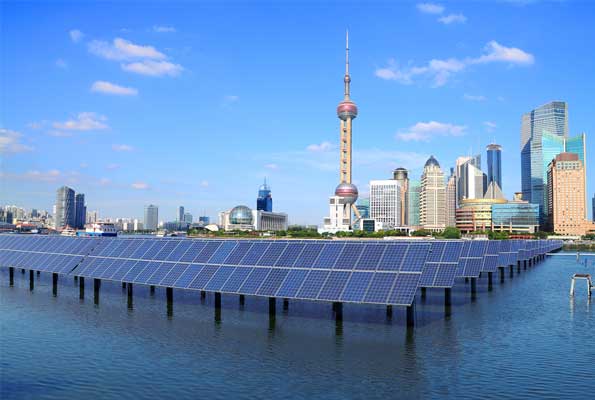According to a survey, China is strengthening its position as the global leader in renewable energy and may even surpass its own lofty energy goals.
According to a report by Global Energy Monitor, a non-profit organization based in San Francisco that keeps tabs on current utility-scale wind and solar farms as well as upcoming projects in the country, China is on track to double its capacity and produce 1,200 gigawatts of energy through wind and solar power by 2025, reaching its 2030 goal five years ahead of schedule.
According to the report, China’s utility-scale solar capacity hit 228 gigawatts in the first quarter of the year, surpassing the capacity of the rest of the world put together. The majority of the installations are located in the north and north-western regions of the nation, including Shanxi, Xinjiang, and Hebei.
The Williamsdale solar farm outside of Canberra has solar panels.
Solar energy’s continued ability to astound the world with its “insanely cheap energy”.
The organization also found solar farms that are currently under development that may provide an additional 379 gigawatts of potential capacity, roughly doubling that of Europe and tripling that of the US.
China has also made enormous progress in terms of wind capacity; its combined onshore and offshore capacity currently exceeds 310 gigawatts, more than double its level from 2017, and almost similar to the combined capacities of the next top seven nations. With planned projects in Inner Mongolia, Xinjiang, Gansu, and coastal regions, China is on track to add an additional 371 gigawatts by 2025, nearly doubling the size of the world’s wind fleet.
Global Energy Monitor project manager Dorothy Mei remarked, “This new data provides unmatched granularity about China’s jaw-dropping surge in solar and wind capacity.”
This in-depth knowledge is essential for navigating the nation’s energy landscape as we closely monitor the execution of potential projects.
According to earlier studies and government data made public in 2023, China could easily meet its goal of delivering a third of its electricity needs from renewable sources by 2030.
China’s push for green energy is a component of its endeavour to reach two carbon reduction targets set for 2020. It is the largest emitter of greenhouse gases and consumes half of the world’s coal, as well as having the second-largest economy in the world. Prior to 2030, Chinese President Xi Jinping promised to reach peak CO2 emissions and achieve carbon neutrality by 2060.
According to the research, China’s exceptional accomplishment in developing its non-fossil energy sources can be ascribed to a variety of government measures, including rules and hefty subsidies to put pressure on provincial governments and power corporations.
On Sunday, China started up the largest hybrid solar-hydro power plant in the world on the Tibetan plateau. The Kela plant can generate 2 billion kW hours of electricity yearly, which is enough to power over 700,000 homes.
The Yalong River basin’s enormous clean energy initiative is still in its early stages. Currently capable of 20GW, the installation should be able to achieve 50 gigawatts by 2030.
China’s energy transformation faces difficulties even with its thorough planning. Recent record heatwaves and drought devastated hydropower plants, causing power shortages that shut down enterprises. Uncertainty is increased by an outmoded electricity grid and rigid energy transmission across areas.
More than three-quarters of the nation’s coal, wind, and solar power is produced in the sparsely populated west, where the Kela facility is situated. However, the East is where the majority of energy consumption takes place. Inefficiencies arise from moving energy thousands of miles across the nation.
The structure of China’s system may encourage the construction of coal plants near renewable energy sources. A large portion of the newly installed renewable energy capacity is not connected to the local electricity grid and is frequently combined with coal power for transmission to areas with higher demand.
In the first three months of 2023, more coal power was granted than in the entire year of 2021.
Martin Weil, a researcher at Global Energy Monitor and one of the report’s authors, claimed that China was progressing. However, because coal is still the country’s main energy source, bigger developments in energy storage and green technology are required for a safe energy future.



